VANCOUVER — It’s been a roller-coaster ride for Aben Resources (TSXV: ABN; US-OTC: ABNAF), a junior explorer on the hunt for high-grade gold at its Forrest Kerr project in northwestern B.C.’s Golden Triangle district. Since July 26, shares of the company have climbed 450% to peak at 49¢, only to fall to 12¢ at press time.
Aben’s president and CEO James Pettit tells The Northern Miner that the shares were “tied to the hip” with those of GT Gold (TSXV: GTT; US-OTC: GTGDF), another explorer in the district that made headlines on July 25 for a gold discovery at its Tatogga property.
“That’s what happens in area plays, stocks get pulled along with other companies that are putting out either positive or negative results,” Pettit says. “I don’t know exactly what happened with GT Gold … it went from $1.85 to $1, whereas ours went from 26¢ to 20¢ — but what can happen is that investors realize it’s the end of the season up there, and even if you have good results they still pull out.”
Aben targeted two mineralized zones at Forrest Kerr — Carcass Creek and Boundary — with 2,500 metres of drilling this year.
The zones are two of many gold occurrences that follow a north-trending structure that strikes across the 230 sq. km property.

Location map of Aben Resources’ Forrest Kerr gold property in northwestern B.C.’s Golden Triangle district. Credit: Aben Resources.
“Since Pretium came into the picture, they turned exploration on its head by finding a large hydrothermal system, rather than a volcanogenic massive sulphide or porphyry deposit, which is what the Golden Triangle is traditionally known for,” Pettit says. “So there has to be some sort of major structural feature that acts as an engine to all of this, and we thought the fault that cuts through Forrest Kerr was a good place to start looking.”
Aben began its drill campaign at Carcass Creek, where historical drilling returned 29 metres of 9.97 grams gold per tonne, including 0.8 metre of 125 grams gold, and 1.9 metres of 91 grams gold.
However, its own drill results were less impressive.
Assays from the three holes ranged from trace amounts to 8 metres of 0.35 gram gold and 1.1 grams silver per tonne, and 5 metres of 0.22 gram gold, 1.34 grams silver and 0.23% copper.

Aben Resources’ land position is tied to a northerly-trending structure that controls numerous gold occurrences in the region. Credit: Aben Resources.
The company had better luck at Boundary, 7.7 km south of Carcass Creek, where drilling followed up on a historical drill hole, 91-16, that hit 11 metres of 33.4 grams gold, including a 0.5-metre interval of 326 grams gold.
Aben’s first hole at Boundary, located 280 metres north of 91-16, intercepted a sulphide-rich, carbonate breccia within a broader halo of quartz-sericite-pyrite alteration and episodic quartz-sulphide-carbonate veining.
Drilling returned 10 metres of 6.7 grams gold, 6.4 grams silver and 0.9% copper from 16 metres deep.
The intercept occurred within a broader mineralized halo, which returned 387 metres of 0.26 gram gold. Most mineralization appears in this intercept and two others that returned 16 metres of 0.07 gram gold and 2.1 grams silver, and 14 metres of 1.1 grams gold, 2.8 grams silver and 0.2% copper.
“If we had the drill results from Boundary North we wouldn’t have left there to drill Carcass, but that’s the nature of exploration,” Pettit says. “The mineralization had broad zones with high-grade cores, so you could say we have a 100-metre wide target. And that really speaks to the scale of this hydrothermal system.”

Plan map of Aben Resources’ latest drilling at its Boundary zone prospect in northwestern British Columbia. Credit: Aben Resources.
Aben drilled another two holes off the same pad, with results returning 6 metres of 21.5 grams gold, 28.5 grams silver and 3.1% copper from 8 metres deep, and 14 metres of 2.91 grams gold, 5.2 grams silver and 0.6% copper from 6 metres deep.
Two other drill holes north and south of historic drilling hit variably brecciated and altered rock with narrow mineralized horizons, but returned minimal assay values.
The last hole was drilled oblique to historical drilling to test the mineralization trend, and returned 12 metres of 0.45 gram gold and 5 metres of 1.38 grams gold, both weakly mineralized with copper.
“The historical zone is a very high-grade shoot that Noranda was fortunate to hit. But we were more interested in knowing whether it connects up with the first three holes. And the general feeling is [that] if we reorient the last hole to drill the other way, we would’ve connected the two zones up. But that’s all for next year.”
The Boundary and Boundary North zones occur within a 3 km long, poorly tested gold-in-soil anomaly.
Pettit expects Aben will complete a “serious amount of drilling” on the Boundary zone next year, along with more drilling to follow up on the gold-in-soil anomalies.
“We’re looking primarily for epithermal systems — porphyries can be the dearth of the juniors because you have to drill so much. We want to stay away from a porphyry and stay in the high-grade environment. There’s an interesting correlation to copper in the area, and that’s what we’re going after.

A drill turns at Aben Resources’ Forrest Kerr gold property in northwestern B.C’s Golden Triangle district. Credit: Aben Resources.
“The Golden Triangle is a very intriguing area. The potential for a high-grade discovery is good — it’s elephant country for a reason — and the market seems to love it. The only downfall is the short drill season.”
Pettit adds that Aben is keeping active during the winter with a drill program at its Chico gold joint-venture property — 40 km south of SSR Mining’s (TSX: SSRM; NASDAQ: SSRM) Seabee mine complex in northern Saskatchewan — with Eagle Plains Resources (TSXV: EPL; US-OTC: EGPLF).
The property is along trend of a regional shear structure that hosts mineralization at Seabee’s Santoy gold deposit.
“SSR is spending a lot of money — you buy a mine for $337 million that has five years left in reserves and it’s all about exploration upside. They’re interested in tapping the fault.”

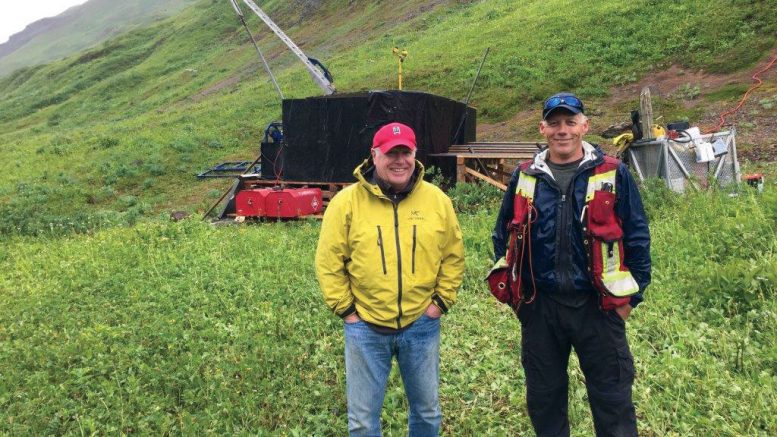
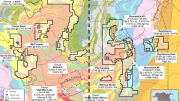
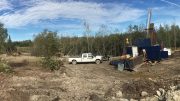
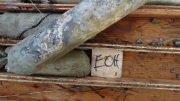
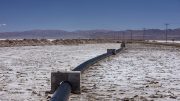
Be the first to comment on "Aben’s Forrest Kerr shows promise"